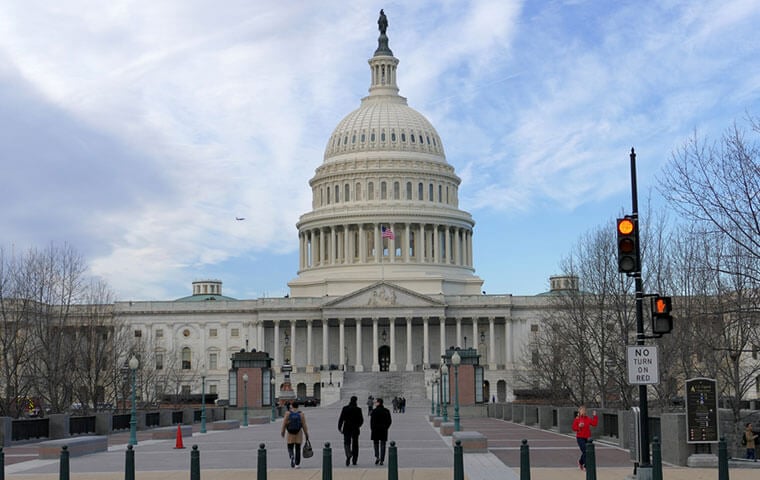 Image: Golden Brown/Shutterstock.com
By: FEDweek Staff
Image: Golden Brown/Shutterstock.com
By: FEDweek StaffThe start of the new federal budget cycle now lies only about two weeks ahead, a process that will highlight partisan differences over the government and its workforce.
President Biden is expected to release his fiscal 2024 budget proposal during the week of March 6, presenting it to a Congress where Republicans now control the House. The new GOP leadership has been preparing since even before last fall’s elections to use the process to stage a showdown over spending and policy decisions.
While federal agencies have funding in place through September 30, they are using the leverage of the prospect of exceeding the federal debt ceiling—temporarily extended through financial maneuvers that are now projected to be used up around August—and the threat of a partial government shutdown starting October 1.
Agency spending levels—which translate into jobs—project to be a main area of focus. Biden’s prior budgets generally sought growth but a Republican move is possible to freeze or even reduce those accounts. The last time that strategy was put into effect, a budget agreement had set spending caps with a requirement for “sequestration” cuts in agency spending if they were not met. That resulted in hiring freezes and unpaid furloughs at some agencies during the summer of 2013—which was followed several months later by a two-week partial government shutdown.
An early signal was sent when the House voted along party lines to rescind the additional $80 billion provided last year for the IRS over the next 10 years, a vote that turned largely on claims that the result would be a doubling of that agency’s staff.
The IRS has said that the large majority of hiring over that time would simply keep up with attrition and that much of the rest would go toward improving assistance to taxpayers. The agency already has added some 4,000 employees to its customer service operations for this year’s tax filing season and is looking to add about another 1,000 at local taxpayer assistance centers.
However, the IRS last week missed a deadline set by its parent Treasury Department to produce a detailed plan for how it would use the additional funding. That plan now is promised for the upcoming weeks, about the same time Biden is to release his budget plan.
Meanwhile, another agency that last year received additional funds for purposes including customer service, the SSA, has told Congress that even so, “backlogs will continue to grow while we hire and train new staff” for tackling the growing backlog of disability benefits applications.
It added that it expects “noticeable improvement” in its 800 number customer service line following an investment in new technology and additional employees, but also not until 2024. Until then, service as measured by wait times and busy signals will increase, it said. The SSA report was ordered by the late-year wrapup spending bill that contained the funding boost.

